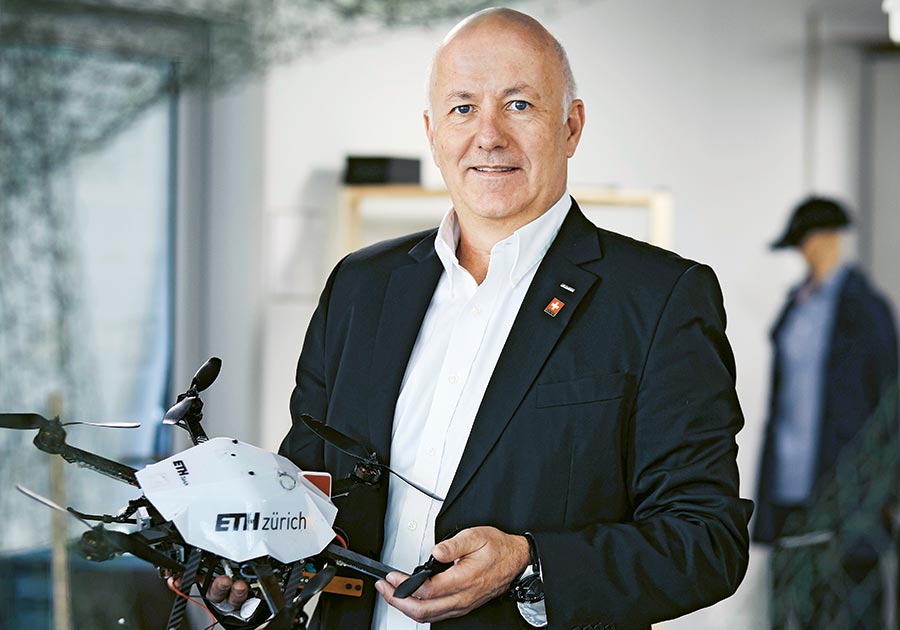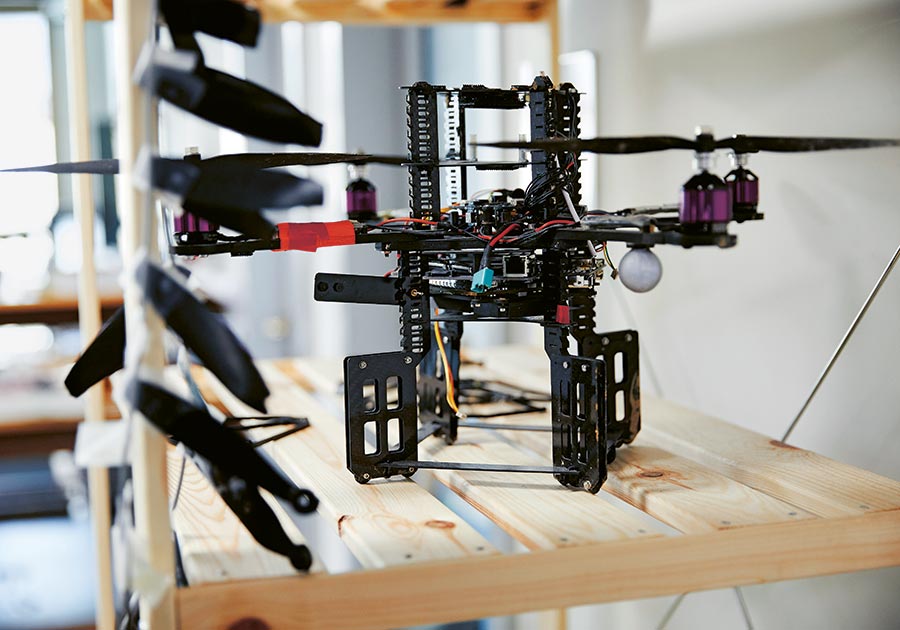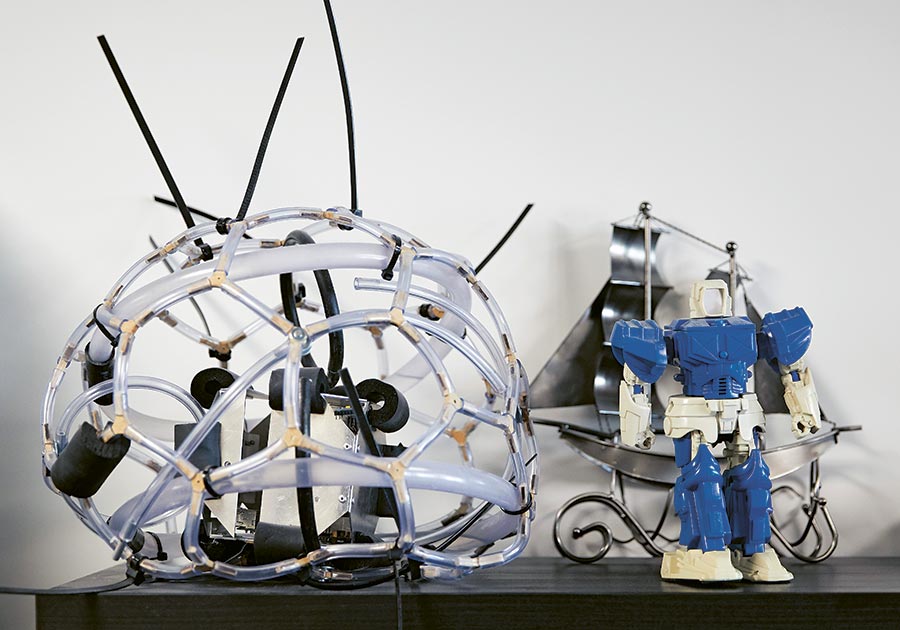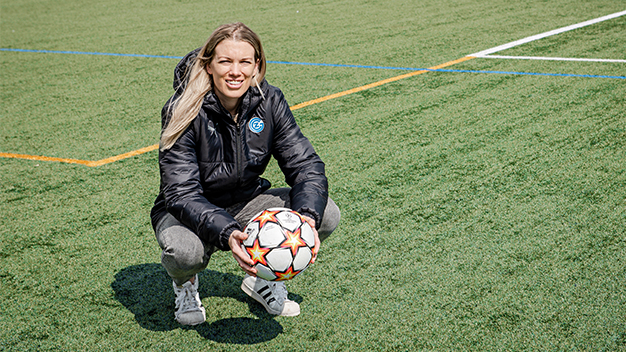Roland Siegwart whips out his smartphone and waves it through the air a couple of times. “We’re currently working on a project that will make it possible to do this – you see, just a few swings of your arm – and digitally map an entire room,” explains the professor and head of the Autonomous Systems Lab at Zurich’s Federal Institute of Technology (ETH). We stand in a corridor of the research centre. On one wall hangs an illustration that describes the technology to a tee. “The key is our new sensor. It’s the further evolution of the kind of receptors that are already built in to today’s electronic devices and enable the display to pan along with the direction the device is pointed in,” says Siegwart. In future, the interior of an entire home could be digitally mapped this way. The ETH is working closely with US tech giant Google in this effort.
A combination of several fields of research
The so-called Tango Project is just one of many that are being pursued in the ETH lab. Students tinker on new autonomous machines which in the not too distant future will be deployed on land, sea or in the air. Here, new ideas are taking form – from beetle-like robots, to solar aircraft, to droning drones. One room looks like a workshop, another is outfitted with wrestling mats, safety nets and cameras in order to flight test, but not destroy, the self-thinking drones. “Our research realm here is fabulous – it combines mechanical engineering with electrotechnology, informatics, sensor technology, artificial intelligence, and of course man,” gushes the robotics professor.
“The robots need a plan, since they don’t understand our world.”
In the service of mankind
The overarching objective of the work being done at the Autonomous Systems Lab: to create devices which take the burden off people wherever a job could be physically taxing or damaging to their health, or those that can otherwise be of greatest benefit to the general populace. Siegwart points up examples, such as their applicability in the underground mining of raw materials, in deep-freeze warehouses and even in the agriculture area. “One of the most pressing problems mankind faces is the food supply.” Here, Siegwart can envision a combination of autonomous drones and agricultural robots as means to achieving a marked increase in farm output. The idea: drones overhead would monitor the soil moisture level and seed growth, as well as keep an eye out for pests, while a robot in the field mechanically destroys weeds and provides water and fertiliser as necessary. “The robots relieve the farmer of a cumbersome task and contribute to increased agricultural yield,” Siegwart summarises.
Robots fail to understand the world
Today, the broad public experience autonomous systems mainly in the area of mobility. Automobiles already have an array of pre-installed support systems that make driving easier: there are cars that can steer themselves into tight parking slots or even stay on cruise control in the same lane while travelling on the motorway. “Autonomous vehicles will fundamentally change the way we go from point A to point B,” says Siegwart. And this is not just a matter of comfort and convenience – the environment will also benefit, as the technology enables vehicles as well as the existing infrastructure to be utilised more efficiently. Not to mention the older generation, who can remain mobile for years to come. “My parents would be pleased as punch if they could use an autonomous vehicle for visits to their grandchildren,” muses the 58-year-old.
But it will take a number of years before the first autonomous automobiles come into daily use. Although those cars have no problem getting around already today in a structured and not all too complex setting, “the robots need a plan, since they don’t understand our world,” explains Siegwart. And precisely that is a prerequisite if one day they are to master the ins and outs of a jammed, multi-lane traffic crossing. In such instances, interaction is called for – it takes eye contact and gestures or signals. Moreover, the systems must be able to recognise unknown objects rapidly and figure out how to deal with them. “In this regard, man is clearly superior to machine,” admits Siegwart.







